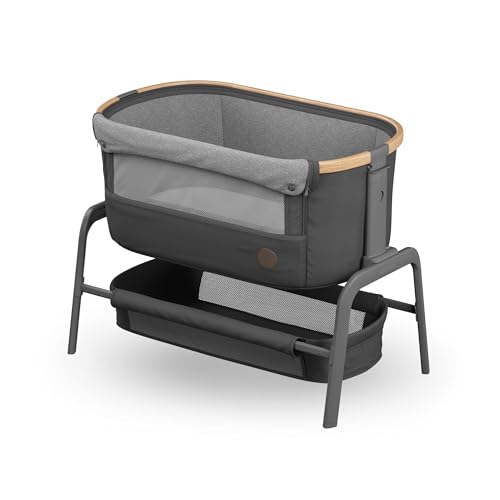7 Essential Tips For Making The The Most Of Your Cot Newborn
Cot for Newborns: A Comprehensive Guide
Choosing the right sleeping arrangements for a newborn is among the most significant choices moms and dads deal with. Amongst the basics for brand-new moms and dads is a cot, which serves as a safe, comfortable sleeping space for the baby. This article will check out the numerous kinds of cots offered, essential safety considerations, pointers for choosing the ideal one, and maintenance standards to make sure toughness and safety.
Types of Cots for Newborns
When it comes to cots, there are numerous alternatives in the market. Each type has its distinct functions and benefits. Below is a table summarizing the various kinds of cots offered for babies.
Kind of Cot
Description
Pros
Cons
Requirement Cot
A timeless crib with repaired sides.
Durable and durable; excellent for long-lasting use.
Can be bulky; may not fit in smaller areas.
Cradle
A small, rocking cot designed for babies.
Portable and soothing for infants.
Restricted use as baby grows; less stable.
Moses Basket
A light-weight basket with handles.
Highly portable; relaxing for newborns.
Shorter life-span; usually not appropriate for older babies.
Travel Cot
A foldable cot ideal for travel and momentary usage.
Easy to transport; usually easy to set up.
May absence sturdiness; not as visually pleasing.
Co-sleeper Cot
Connects to the parents' bed, allowing proximity.
Promotes bonding; breastfeeding benefit.
Minimal space; frequently more expensive.
Convertible Cot
Can change from a crib to a young child bed.
Adapts with baby's development; long-term financial investment.
Greater initial cost; assembly may be needed.
Essential Safety Considerations
When selecting a cot for a newborn, security ought to constantly be the main issue. Here is a list of important safety requirements and standards to think about.
- Standards Compliance: Ensure the cot fulfills security requirements set by regulatory bodies such as the Consumer Product Safety Commission (CPSC) in the U.S. or the European security standards.
- Slat Spacing: The range between cot slats should not exceed 2 3/8 inches (6 cm) to avoid a baby's head from getting stuck.
- Stability: The cot needs to be tough and steady. Shake the cot before purchasing to guarantee it doesn't wobble.
- Bed mattress Fit: The bed mattress ought to fit comfortably into the cot, with no spaces bigger than 2 fingers between the bed mattress and the cot sides.
- No Hazardous Materials: Check for non-toxic surfaces and products, ensuring that the cot is free from hazardous chemicals.
- Eliminate Clutter: Avoid putting toys, pillows, or blankets inside the cot, as these can posture suffocation dangers.
Tips for Choosing the Right Cot
Selecting a cot can be a frustrating procedure due to the myriad of choices available. Here are some suggestions to help enhance this procedure:
- Consider Size: Evaluate the size of your nursery or bed room. Guarantee the cot fits easily in the designated location.
- Prepare for Growth: Think about the longevity of the cot. Convertible cots might provide much better worth by adjusting to a growing kid.
- Spending plan Wisely: Quality cots can vary commonly in price. Set a spending plan and stick to it, concentrating on security and functionality initially.
- Research study Brands: Read evaluations and conduct research study on different brands. Trusted makers must offer transparent information about their safety practices.
- Comfort: Ensure that the bed mattress is firm and offers sufficient assistance. A soft bed mattress might increase the danger of SIDS (Sudden Infant Death Syndrome).
- Looks Matter: While security is vital, consider how the cot suits the overall decoration scheme of the nursery.
Upkeep of the Cot
Ensuring the safety and durability of your newborn's cot requires ongoing upkeep. Here are some useful upkeep pointers:
- Regular Inspections: Routinely check the cot for any loose screws or parts. Tighten Cots Newborn as required to keep toughness.
- Tidiness: Wipe down the cot frequently with a damp cloth and moderate soap to remove dust and allergens.
- Bed mattress Care: Choose a waterproof cover for the bed mattress, making it easy to tidy spills or mishaps. Frequently replace the bed mattress if it shows signs of wear and tear.
- Safe Storage: If the cot is adjustable or convertible, store any detachable parts in a protected location, guaranteeing they are not lost and are available for future usage.
- Child's Development: Monitor your kid's development. Transition to a young child bed when they begin climbing up out of the cot to guarantee their security.
Regularly Asked Questions (FAQs)
1. What is the best type of cot for a newborn?
The best cot varies depending on personal needs and area, but a Standard Cot is often suggested for its durability and long life-span.
2. The length of time can a newborn usage a cot?
Normally, a lot of infants shift out of a cot between 2-3 years depending upon height and weight.
3. Is a co-sleeper cot safe?
Yes, co-sleeper cots are created to be safe, as long as they satisfy security standards and are appropriately set up.
4. Should I use bumpers in my cot?
It is advised to avoid utilizing bumpers as they pose a suffocation threat. Instead, guarantee the cot is clear of any soft bed linen.
5. Can I utilize a second-hand cot?
If thinking about a second-hand cot, guarantee it abides by the latest security requirements and has not surpassed its life expectancy or been recalled.
Picking a cot for a newborn is a vital decision that needs mindful consideration of safety, space, and performance. By comprehending the types, safety functions, and maintenance requirements, parents can with confidence choose a cot that meets their family's needs. Ultimately, the ideal cot will offer a safe and comfortable space for your newborn to sleep, adding to their well-being and advancement during those essential early years.
